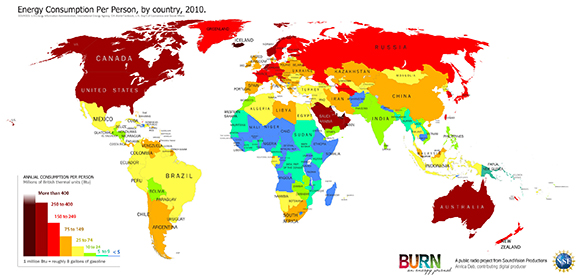from the Editors
September 3, 2014
The September 21 Peoples Climate March and related activities–notably, the September 19-20 NYC Climate Convergence Conference–make a timely occasion to look at the dimensions of the global environmental crisis and how to confront it.

If solutions are to be found, where to begin? Undoubtedly, all-out efforts in basic and applied climate research, conversion to solar and sustainable technology, and profound changes in agriculture and industry will be essential for human civilization — and a great many of our fellow species — to survive. Most urgent, however, is the need for mass environmental movements armed with both a clear-headed understanding of the crisis and a transformational program for survival with social justice.
Nature’s warnings are ubiquitous. The poisoning of the drinking water of half a million Ohioans by algae bloom toxins, the result of phosphorus fertilizer and livestock manure runoff into Lake Erie, is no isolated incident — the same threat exists in hundreds of bodies of water in the United States. Smoke from fires in the Canadian Northwest Territories, the inevitable consequence of climate warming, has risen into the stratosphere and blown so far as to be detected in Portugal. Every week brings new examples.
Those of us who call ourselves “ecosocialists” understand that two stark realities stand out. The first is that capitalist production and “the market” cannot and will not halt the rush to climate catastrophe. Whatever “green” technologies may come on stream in a capitalist economy won’t replace, but only supplement, the consumption of deadly fossil fuels — from new coal-fired plants to deep-sea oil drilling to tar sands to fracking.
The second reality, however, is that even though a socialist transformation will be absolutely necessary for survival, the crisis cannot “wait for the revolution” if we’re going to avoid the collapse that could well become irreversible — according to a mounting mass of scientific evidence — within a few decades. As scientists and activists like James Hansen and Bill McKibben have pointed out, preserving good odds of survival depends on keeping four-fifths of known hydrocarbon reserves in the ground — reserves already listed as “assets” on the books of the energy corporations — to say nothing of deposits yet to be discovered.
In fact, the struggles to halt environmental destruction and capitalism itself must be waged simultaneously, and inextricably. It’s not about what comes “first.” A rapid transformation from fossil fuel to sustainable energy entails both a technical and a radical democratic transformation — both feasible, but both revolutionary.
The most promising sign regarding the Peoples Climate March is the extent of union support it’s achieved. Labor has been deeply divided on environmental issues — not surprisingly with high unemployment and weakening industries, with construction unions lining up for the Keystone XL pipeline and auto workers naturally concerned about their jobs if those SUVs and F-150s were to go away. But New York unions like SEIU 1199, AFSCME District Council 37 and the New York State Nurses Association are strongly in support of the march.1
That’s not surprising either, since the folks these unions serve — and many of their members — have been among those devastated by events like Superstorm Sandy. Other union support is coming from the Communication Workers, the Transport Workers Union and Amalgamated Transportation Union, UAW Region 9A, IBEW Local 3 and SEIU 32BJ.
That’s a promising start, but only the beginning of what’s desperately needed. Certainly there’s potential for expanded labor outreach. For example, workers in municipalized or public utilities will tend to be open to the possibilities for conversion to renewable energy — their jobs aren’t dependent on coal and oil extraction. With 20% of U.S. cities and towns currently owning their electric utilities, campaigns to increase municipal ownership of utilities can be a starting point for popular control of energy production and supply. Such reorganization requires mobilizing our resources and transforming our jobs. Laid-off workers need full compensation until their new jobs open up.
Activists can reach out to link labor with a host of community-rooted environmental justice struggles, including fights around the health disasters produced by coal-fired plants and the mining industry, many of which are rooted in communities of color.
The labor movement should be embracing the principles developed more than two decades ago by the 1991 National People of Color Environmental Leadership Summit. And for an example of the kind of community campaigns taking place around the country, see the energy program of Progressive Richmond (California).
Capitalism, however, presents millions of workers with the impossible choice: Your job or your life. A program to address the crisis facing people and communities that are dependent on the industries that are killing them, and the ecosystem, must be both practical and genuinely radical. Mel Packer, a veteran labor, community and public health activist, lays it out in a powerful article that should be required reading: “Coal miners are mad, and scared…and they have a right to be.”
A Survivable Future
The task ahead is to build massive strategic and visionary alliances, across not only sectoral but even national borders. The central question is how can millions — indeed even billions of people covering a gamut from relatively high-paid working people in rich countries, to vast global populations living at or near what the United Nations calls “absolute poverty,” and every level in between — see a common future that will be in their own interests and those of their children, not simply a nice idea abstracted from their real lives and problems?
No one should imagine that this can be simple, free from contradictions, or brought about through some miraculous technological salvation — although technical breakthroughs can and will happen. A solution cannot be based on a fantasy that a global population of seven billion people (today) to nine billion (by 2050) can attain the per capita levels of meat consumption or private automobile ownership as found in North America and Western Europe today. Obviously it cannot be premised on maintaining the obscene existing levels of inequality between the rich and poor countries, or for that matter within these societies.
But neither can a “solution” be based on somehow battering down global living standards to some minimum level in the name of sacrifice to save the planet. Even if a universal pledge of austerity were desirable, there would be no way to impose it except by some totalitarian elite dictatorship (and those with such power never sacrifice their own privileged standards of consumption).

Click for a larger version of this image.
There are differences — which should be frankly acknowledged — within the fledgling “ecosocialist” movement, over how drastically certain forms of consumption must be cut, to what extent the very definitions of things like “growth” and “standards of living” need to be re-thought, and whether advances in technology represent a promise or a curse. There are also varying perspectives on the degree to which “prefiguration” — reshaping our individual and communal life styles today in directions we hope will represent a future society — can pave the way for an ecosocialist transformation.
These are important debates, but they will be ultimately decided not within small “vanguard” circles but only through conscious movements on a massive and global scale. That’s one reason among many to fight for cutting the work week — giving people time and space to discuss priorities, structure their own lives with more free time and less stress, and participate in politics.
To envision the kind of future that’s necessary and possible, the place to begin — even if only the beginning, it’s a critical one! — is with what engineers call “low-hanging fruit.” Surely that begins with abolishing the war industries that consume so many resources while producing so much misery around the world. A fraction of those expenditures would suffice to provide clean drinking water to a couple billion people who lack it (not all of whom live in the “Third World,” as thousands of cut-off Detroiters will attest). In the process, the biggest global cause of child mortality and much endemic disease would be eliminated in short order.
Second is the urgency of eliminating production of pure waste — like all the horrible ubiquitous plastic packaging that consumes massive quantities of oil, and ultimately winds up in the oceans choking and poisoning sea life. Third, agricultural production must be transformed, to eliminate the factory-farming methods of stuffing livestock with the antibiotics that are rapidly producing drug-resistant pathogens, massive pesticide applications that poison farmworkers and waterways and kill off pollinating bee colonies by the millions. As to a sustainable democratic community agriculture, the international, women-led Via Campesina has offered a model — not as a blueprint, but as an outline of possible directions to explore.
Affordable mass transit in car-choked cities like Los Angeles, or Detroit, where so many low-income residents without cars can’t get to jobs that are available for them, is a must.
Are these measures, in themselves, sufficient? Almost certainly not. There are hard choices that will need to be made. But as revolutionary and democratic ecosocialists, we recognize that those choices can only be made and solutions found through movements that must be built today against war production, stopping fracking and Keystone XL, defending indigenous communities’ struggles against dams and deforestation…In short, the bonds of solidarity built in movements today are crucial for people to see themselves as a human family to make the hardest of decisions tomorrow and beyond. The ecosocialist goal is to overcome the alienation of capitalism through unleashing the creativity that prioritizes meeting human needs sustainably and equitably. [See Bill Resnick’s article in this issue on a democratic energy future.]
No Technical Saviors
Among the reports and technical programs circulating in government and expert circles is a Deep Decarbonization Pathway Project (DDP) developed under the auspices of the United Nations Sustainable Development Network, led and heavily promoted by liberal economist Jeffrey Sachs..
Such reports, and their warnings of the consequences of failing to cap global warming at two degrees Celsius (3.6 degrees Fahrenheit) above pre-industrial temperatures, are useful in their way. But what’s fatally missing — indeed, beyond the horizon that those like Sachs, deeply embedded in the existing system, can recognize — is the understanding that “deep decarbonization” is simply incompatible with the most basic imperative of capitalist production.
That imperative is growth — meaning the growth of production for profit, whether or not such growth enhances or degrades human lives, the viability of life on Earth, or anything else. The absolute urgency of cutting way back on fossil-fuel consumption is going to require, inevitably, a reduction in growth in that sense — although if properly organized, not necessarily a reduction in production for human needs. The production of war materiel and plastic wrapping is profitable, in a way that clean water for two billion folks who can’t pay “market price” may never be.
In a capitalist market economy, each unit — each enterprise — must profit at whatever expense, or die. Honorable intentions make little to no difference. And each capitalist nation-state can be expected, under DDP or any similar project, to advance the interests of its own leading businesses’ and industrial corporations’ interests,
It’s our bet that working people — through their struggles and bonds of solidarity with others near and far — can understand that reality, and act on it. That’s the socialist side of ecosocialism. Yet as we said at the outset, we can’t afford to “wait for the revolution” either.
Footnotes
- “Climate Campaign Tipping Point? Unions Get on Board,” Labor Notes, August 2014.
